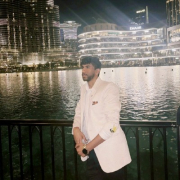


Chef and VMware Aria Automation are both used for automating infrastructure and application management. VMware Aria Automation is seen as superior due to its extensive features.
Features: Chef offers strong configuration management capabilities, ease of use, and straightforward setup. VMware Aria Automation provides a comprehensive suite for automation, advanced integration with VMware products, and broader functionalities.
Room for Improvement: Chef could enhance scalability, add more enterprise-friendly features, and improve integration. VMware Aria Automation needs better documentation, more intuitive configuration settings, and enhanced user guidance.
Ease of Deployment and Customer Service: Chef users report a smooth deployment process, though complex in large-scale environments, with positive customer service. VMware Aria Automation has a well-documented but time-consuming setup, with mixed customer service reviews due to delayed responses.
Pricing and ROI: Chef is praised for its competitive setup cost and satisfactory ROI, offering quicker financial return. VMware Aria Automation is more expensive upfront but deemed worth the investment for its extensive feature set and better long-term value.
Everything we've gained from it makes my job easier day after day, and I see value in it as an engineer.
Microsoft Intune not only saves costs by reducing the number of personnel needed but also offers a comprehensive solution for managing laptops, applications, security, individual access, and enrollment.
Importantly, when someone leaves the company, it helps protect document access on their devices.
The return has been far more hours saved than spent.
Chef has provided a return on investment, particularly in needing fewer employees, as the tool significantly reduces the amount of human work required for many tasks.
We have seen significant improvement in the time and the way we make changes to the infrastructure.
When a support ticket is submitted, it directly reaches someone with Intune support expertise.
When I contacted Microsoft, they had the same expertise, if not more, which is phenomenal because I felt heard and my problem was solved.
Sometimes, the support provided is excellent, and the representative is knowledgeable, while other times, the service needs improvement.
We usually work with the Chef teams and community support, who are always willing to assist.
We never had major issues to report or request support.
The scalability of Microsoft Intune is ten out of ten.
Ideally, we want to automatically segregate devices based on user properties like primary use, but currently, dynamic groups seem limited to device properties.
It supports organizations with 200 endpoints and those with more than 15,000 endpoints.
We leverage both to achieve the best option possible for scaling.
Chef's scalability handles a large number of nodes easily, allowing us to manage hundreds of servers consistently using the same set of cookbooks.
Chef's scalability is evident as the public sector organization I work at serves a population of 5 million, and we have had no problems with scaling.
We have not experienced downtime, bugs, or glitches.
It appears Microsoft Intune undergoes changes without informing customers.
Microsoft Intune has been very stable.
It is a good tool to work with, offering a strong developer experience and community support.
Chef is stable.
In my experience, Chef is quite stable most of the time.
Features like unlocking devices sometimes fail, and the support offered for other operating systems is insufficient.
There are communication issues, so you might start working with a feature without knowing if it will be deprecated six months from now.
Many third-party companies offer single-pane-of-glass reporting that shows you what your update environment looks like, how your patch is doing, application status, etc., but Intune's reporting is not intuitive.
On support, I think there should be more focus on how we can achieve AI automations in answering questions for beginners and addressing deep concerns without general manual management.
Self-healing infrastructure continuously verifies that the system matches the desired state and can auto-correct configuration changes during the next run.
To improve Chef, making an interface with another language such as Python or Java that is well understood, as capable as Ruby, and even more widely adopted would demystify it a bit.
It operates for both of my products, however, as a product, it is complicated to integrate and automate with other products.
Introductory professional services, like a fast-track service, were included with our E5 membership, and there have been no additional costs.
The Intune suite and add-ons, such as batch management and remote help, are costly.
It costs approximately forty euros per user per month.
Licensing looks reasonable compared to the manual work of managing whole data centers with even 10,000 servers.
My experience with pricing, setup cost, and licensing is that we sidestepped it by using Cinc because none of the functionality that is exclusive to the paid version was actually in use in the organization.
Intune excels in configuration and compliance management for Windows 10, ensuring devices receive timely updates and adhere to organizational standards.
Dynamic groups allow us to set conditions for automatic membership, eliminating the need for user intervention or manual review and ensuring a seamless workflow.
Windows Autopatch is the most valuable because it removes the burden of patch management.
Security is a key aspect that Chef can automate, monitor new features that are available, and even do patches without you getting involved.
Chef can manage hundreds or thousands of servers effortlessly, allowing for easy rollout of a single cookbook change to all machines.
When you have infrastructure as code and you already have everything apart from the environment-specific config, which you can specify in variables, then it is not only more repeatable and reliable, it is faster.
It helps us automate the workflow of creating many VMs and the TensorFlow key method.
We have strong regulations for maintaining compliance and mitigating risks with this product.
| Product | Market Share (%) |
|---|---|
| Microsoft Intune | 8.7% |
| VMware Aria Automation | 5.7% |
| Chef | 2.4% |
| Other | 83.2% |



| Company Size | Count |
|---|---|
| Small Business | 117 |
| Midsize Enterprise | 46 |
| Large Enterprise | 152 |
| Company Size | Count |
|---|---|
| Small Business | 3 |
| Midsize Enterprise | 7 |
| Large Enterprise | 19 |
| Company Size | Count |
|---|---|
| Small Business | 32 |
| Midsize Enterprise | 24 |
| Large Enterprise | 130 |
Microsoft Intune provides centralized management of mobile devices and applications, ensuring security, compliance, and productivity through integration with Microsoft services like Microsoft 365 and Azure Active Directory.
Organizations use Intune for managing mobile devices and applications, enhancing security and compliance across platforms. With features like single sign-on, conditional access, and zero-touch deployment via Autopilot, it facilitates efficient operations. Intune's scalability, easy enrollment, and capabilities such as remote wipe support diverse device management, offering robust data protection and efficient operation. Despite its features, improvement areas include reporting, compatibility with non-Microsoft devices, and better support for macOS and Linux devices.
What are the key features of Microsoft Intune?
What benefits should users look for in reviews?
In industries such as finance, healthcare, and education, Microsoft Intune is implemented to ensure secure and compliant device management. Companies leverage its capabilities to deploy security policies and manage both corporate-owned and BYOD environments, facilitating a unified approach to data protection and compliance.
Chef, is the leader in DevOps, driving collaboration through code to automate infrastructure, security, compliance and applications. Chef provides a single path to production making it faster and safer to add value to applications and meet the demands of the customer. Deployed broadly in production by the Global 5000 and used by more than half of the Fortune 500, Chef develops 100 percent of its software as open source under the Apache 2.0 license with no restrictions on its use. Chef Enterprise Automation Stack™, a commercial distribution, is developed solely from that open source code and unifies security, compliance, infrastructure and application automation with observability. Chef provides an unequaled developer experience for the Coded Enterprise by enabling users to express infrastructure, security policies and the application lifecycle as code, modernizing development, packaging and delivery of any application to any platform. For more information, visit http://chef.io and follow @chef.
VMware Aria Automation is a cloud management tool that allows companies to simplify their cloud experience through a modern automation platform. The solution is designed to deliver self-service clouds, multi-cloud automation with governance, and DevOps-based security and infrastructure management. It helps organizations improve IT agility, efficiency, and productivity through its various features.
VMware Aria Automation has multiple use cases that include the following:
VMware Aria Automation Features
VMware Aria Automation has various features that allow users to easily perform operations. Some of the solution's capacities include:
VMware Aria Automation Benefits
VMware Aria Automation offers its users various benefits. Some of the biggest advantages that the solution brings to companies that utilize it include:
Reviews from Real Users
Awais J., CTO/CEO at a tech services company, likes VMware Aria Automation because it saves a lot of time, provides more visibility, and has extensive automation capabilities.
An IT consultant at a government rates VMware Aria Automation highly because the product gives you flexibility to analyze and consume resources.
We monitor all Configuration Management reviews to prevent fraudulent reviews and keep review quality high. We do not post reviews by company employees or direct competitors. We validate each review for authenticity via cross-reference with LinkedIn, and personal follow-up with the reviewer when necessary.